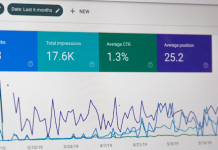This article deals with the practical use of the Internet in the financial system: Internet Banking, as a new form of communication between the bank and its clients and also a new way of doing business, where anyone with a computer in front of them has a virtual branch of their bank in the time you need it.
Although the number of users using online banking services such as Burosoftware has been growing, it is still minimal compared to the population, and despite there being a wide range of products and services, users prefer to use only the simplest ones.
On the other hand, it refers to the significant investment in technologies made by banks to improve their processes and services, the results of which cannot be seen in the short term. Likewise, the issue of the risks of using this service is discussed and finally the security measures that are being applied, in order to reduce the mistrust of customers and encourage their migration from traditional banking to electronic banking via the Internet.
In a globalized world where the Internet has transformed the way of doing business, the financial system could not be left behind. New information technologies are being incorporated into banking services, which are altering the traditional definitions of product, market and customer, and which have changed global banking, developing Internet banking as a means of communication between banks and their customers.
Internet banking has significantly reduced barriers to entry, accelerating bank disintermediation. Currently, studies show that the sector that is using information technology the most in the world is the financial sector.
At first when banks opened their web pages, in order to align themselves with the new technologies that had already been accepted by their clients with e-commerce, they were not convinced of the profitability or potential of this business.
Thus, the first pages had a complicated design, which prevented rapid navigation and only repeated the same advertising messages from the branches. Subsequently, banks invested heavily in technology and marketing, which today allow them to offer a wide range of free online services, from inquiries of savings account balances, transfers between accounts, payment of services such as electricity, water, telephone, etc.
On the other hand, although in the early days of Internet banking, customers did not have confidence in this new medium; the ease of use, the speed of the online service and the cost reduction of not having to go to bank offices or make long queues, are its most significant advantages, and the factors that explain its significant growth.
Banks are making efforts to encourage the migration of their current customers to electronic media, since they are cheaper than the branch; as well as to attract new virtual clients to Internet banking. Although the statistics show that the number of clients that carry out operations through Internet does not stop growing; Online banking does not have short-term returns, but rather long-term returns, since it is a new product in maturity, and it is necessary to establish a culture of use of this technology, so it is not possible to know how long it will take return on investment (high start-up and advertising costs).








